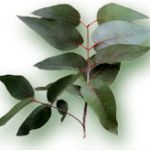| Common Name: |
Kino |
| Other Names: |
Malabar Kino, Bastard Teak |
| Botanical Name: |
Pterocarpus marsupium |
| Genus: |
Pterocarpus |
| Family: |
Papilionaceae |
| Native Location: |
S and C India, and Sri Lanka |
| Cultivation: |
Well-drained soil in sun. |
| Propagation: |
By seed sown when ripe. |
| Harvest: |
Sap is tapped from incisions in the trunk and dried for use in powders and tinctures. Bark is collected as required and used in the form of powder and decoctions. Leaves are picked during the growing season and crushed for poultices. |
| Height: |
18m (60ft) |
| Width: |
10m (30ft) |
| Hardiness: |
Min. 15-18°C (59-64°F) |
| Parts Used: |
Sap, occasionally bark and leaves. |
| Properties: |
A very astringent herb that controls diarrhea and discharges, promotes healing, and has anti-diabetic effects. |
| Medicinal Uses: |
Internally for diarrhea, dysentery, and diabetes. Externally for sore throat, boils, sores, skin diseases, and vaginal discharge. |
| Bibliography: |
Encyclopedia of Herbs by Deni Brown Copyright © 1995, 2001 Dorling Kindersley Limited Pg 335 |

